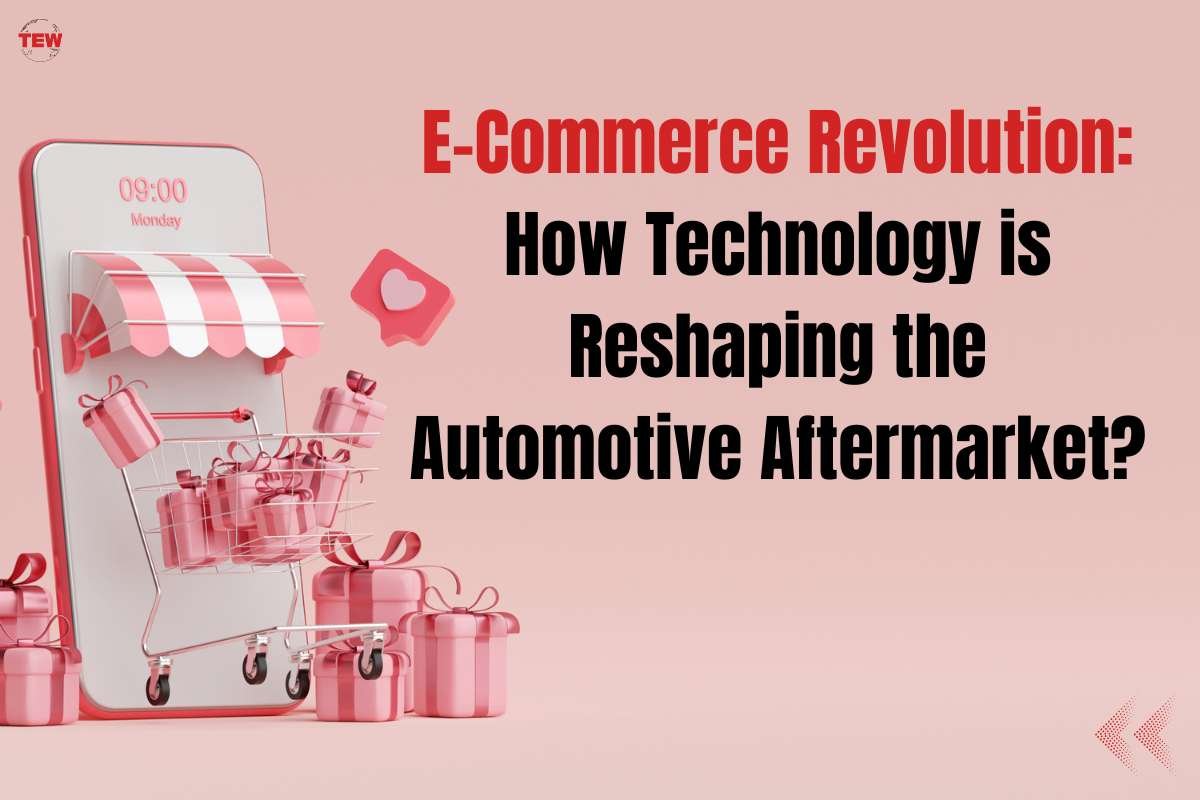The automotive industry is undergoing a significant transformation, driven by the rapid advancement of technology and the increasing popularity of e-commerce. In particular, e-commerce in the Automotive Aftermarket, which encompasses the sale of spare parts, accessories, and services, is experiencing a revolution in the way business is conducted. This article explores the impact of technology on the automotive aftermarket and how e-commerce is reshaping the industry.
The introduction section provides an overview of the growing significance of e-commerce in the automotive industry and offers a brief explanation of the automotive aftermarket.
Here are 8 ways of reshaping the automotive aftermarket for e-commerce:
1. The Traditional Automotive Aftermarket
This section delves into the traditional brick-and-mortar stores that have long been the mainstay of the automotive aftermarket. It highlights the challenges faced by these businesses in terms of limited product range, geographical constraints, and customer accessibility.
2. The Emergence of E-commerce in the Automotive Aftermarket
Here, the focus shifts to the rise of e-commerce in the automotive aftermarket. It discusses the shift towards online platforms and marketplaces like https://boodmo.com/ which have opened up new avenues for buyers and sellers to connect and transact. The benefits and advantages of e-commerce, such as convenience, broader product selection, and competitive pricing, are explored in detail.
3. Technology Driving the E-commerce Revolution
This section examines the technological advancements that are driving the revolution of e-commerce in the Automotive Aftermarket. It highlights the role of digital platforms and marketplaces in connecting buyers and sellers, enabling seamless transactions and efficient communication. Advanced search capabilities, online catalogs, and virtual product displays are discussed as tools that enhance the customer experience and improve parts identification.
4. Improved Customer Experience

The focus here is on the enhanced customer experience that e-commerce in the Automotive Aftermarket. It highlights the convenience of online shopping, which allows customers to browse and purchase parts from the comfort of their homes. The wider range of products and brands available online and the availability of comparison tools for price and quality analysis are also emphasized.
5. Disruptive Business Models
This section explores the emergence of disruptive business models in the automotive aftermarket. It discusses the rise of direct-to-consumer (D2C) sales models, which eliminate intermediaries and offer cost savings to customers. Additionally, aggregator platforms that consolidate various sellers and provide a one-stop-shop experience for buyers are examined.
6. Supply Chain Transformation
This section focuses on the transformation of the supply chain in the automotive aftermarket. It discusses how e-commerce streamlines inventory management and logistics, enabling efficient just-in-time (JIT) inventory practices and drop shipping. The improved order tracking and delivery processes made possible by e-commerce are also highlighted.
7. Overcoming Challenges and Concerns
Addressing concerns and challenges associated with e-commerce in the automotive aftermarket is the goal of this section. It examines how the industry is tackling issues related to product quality and authenticity, handling returns and warranty claims, and building trust and credibility in online transactions.
8. Future Trends and Innovations

This section looks into the future of the automotive aftermarket and discusses emerging trends and innovations. It explores the role of Artificial Intelligence (AI) and machine learning in aftermarket sales, as well as the potential of Augmented Reality (AR) for virtual vehicle diagnostics and part installation.
Conclusion
The conclusion section summarizes the key points discussed in the article, emphasizing the transformative impact of e-commerce and technology on the automotive aftermarket.
FAQs
FAQ 1: How has e-commerce changed the way customers buy auto parts?
E-commerce has revolutionized the way customers buy auto parts by providing a convenient online shopping experience. In the past, customers had to visit physical stores, often facing limitations in terms of product availability and geographical constraints. With e-commerce, customers can browse and purchase auto parts from the comfort of their homes, accessing a wide range of products and brands. Online platforms also offer advanced search capabilities, making it easier to identify the right parts for specific vehicles. Overall, e-commerce has made the process of buying auto parts more efficient, convenient, and accessible.
FAQ 2: Are there any risks associated with buying auto parts online?
While e-commerce in the automotive aftermarket offers numerous benefits, there are some risks to be aware of. One of the main concerns is ensuring product quality and authenticity. It’s important to choose reputable sellers and platforms that have reliable customer reviews and ratings. Customers should also check for proper certifications or manufacturer warranties when purchasing auto parts online. Additionally, it’s crucial to provide accurate vehicle information to ensure compatibility and avoid ordering incorrect parts. By practicing due diligence and selecting trusted sources, customers can mitigate these risks and enjoy a positive online shopping experience.
FAQ 3: What advantages do direct-to-consumer sales models offer in the automotive aftermarket?

Direct-to-consumer (D2C) sales models have gained popularity in the automotive aftermarket due to several advantages. By eliminating intermediaries, D2C models often offer cost savings to customers by bypassing traditional distribution channels. This means that customers can buy auto parts directly from manufacturers or authorized sellers, ensuring genuine products and competitive pricing. D2C sales models also allow for better communication and feedback between customers and sellers, leading to improved customer service and support. Overall, D2C models enhance transparency, affordability, and customer satisfaction in the aftermarket.
FAQ 4: How are online platforms addressing concerns about product quality and authenticity?
To address concerns about product quality and authenticity, reputable online platforms employ various measures. They often vet and onboard trusted sellers who meet specific quality standards. Many platforms also provide customer reviews and ratings, allowing buyers to make informed decisions based on the experiences of other customers. Additionally, some platforms have authentication processes in place to verify the genuineness of products. Customers can look for platforms that offer guarantees, warranties, or return policies to ensure satisfaction and protection in case of any issues with the purchased auto parts.
FAQ 5: What role does AI play in the future of the automotive aftermarket?
AI is poised to play a significant role in the future of the automotive aftermarket. AI-powered systems can enhance various aspects, such as inventory management, demand forecasting, and personalized product recommendations. With AI algorithms analyzing customer behavior and preferences, platforms can provide tailored suggestions and offers, improving the overall customer experience. AI can also help automate parts identification, making it easier for customers to find the right parts for their vehicles. Additionally, AI-driven analytics can provide insights into market trends, allowing businesses to optimize their product offerings and pricing strategies. Ultimately, AI has the potential to drive efficiency, personalization, and innovation in the automotive aftermarket.




